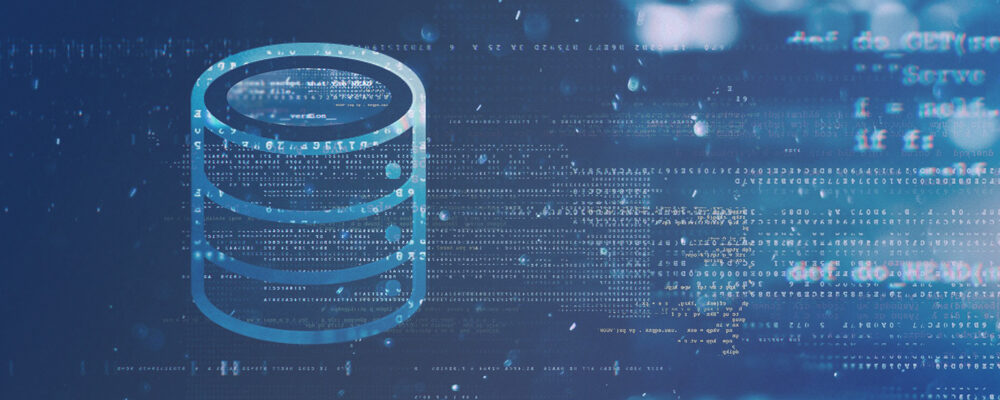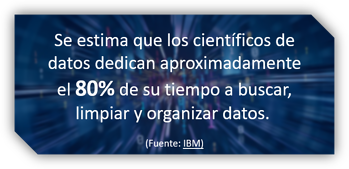the rise of Big data and machine learning opened unique opportunities for data analytics to establish itself as a key activity in the business environment. Nowadays, companies strive for an analytical advantage that puts them ahead of the competition when it comes to serving customers and users.
What enables them to achieve this advantage? On the one hand, better personalize your proposals and offer more satisfactory experiences to your clientele; Y, for another, optimize your own business and operational processes. In fact, These are the great reasons that lead many companies to try to become an organization. data driven.
However, disruptive technologies that support analytical tasks are very attractive and add a lot of value, but what really constitutes the key raw material for all these processes, namely, raw gold, son the data. Y, to perform predictive analytics, it is necessary to prepare them: this instance is key to obtain valuable results in terms of recommendations, insights or predictions.
How is this task successfully carried out?
Let's go back for a moment to a more general perspective: What are predictive models? Predictive modeling is a process that uses data and statistics to predict results with data models. Historical data is typically used to build a mathematical model that captures important trends. Later, that predictive model is used with current data to predict what will happen next or to suggest actions that help achieve optimal results.
Predictive analytics: what is it and how to use it
Models enable predictive analysis by creating forecasts from existing data. Insofar as they give an idea of what could happen in the future, offer a significant competitive advantage. These techniques do not predict what will happen, rather, they identify patterns in large amounts of data and, Thus, can determine the probability of certain future events.
Some predictive analytics use cases:
- Help forecast demand.
- Anticipate staff turnover rates.
- Plan for equipment maintenance problems, machines and fleet.
- Make provisions at the credit risk level.
- Collaborate in fraud detection.
- It allows to forecast the movement of inventory or other types of resources.
- Operating efficiency: forecast energy demand in the electricity grid.
- Contribute to a better customer experience, for instance, in CRM and marketing automation tools.
- Physical and digital security management.
- Urban planification.
To make all these contributions, predictive analytics uses techniques such as machine learning and data mining.
It may interest you: Can Big Data Help Contain the Coronavirus Pandemic?
Data optimization
The fact that more and more companies seek to have an analytical advantage made the data scientists will begin to occupy a more relevant role in organizations. These experts are responsible for preparing and analyzing the data in depth to obtain actionable insights and provide the knowledge on how to extract meaning and interpret the data..
Data scientists use data from a wide variety of sources to do their work: transactions, CRM, customer service, traffic to your website, polls, digital marketing and advertising; They also use geographic data, demographic and economic, sensor data, audios, videos, images, etc. Before designing the predictive models and algorithms that will then go to the deeper analysis stage, these specialists must tackle other key tasks: identify what data you will need (according to business needs), collect it and then clean and validate it to ensure consistency, integrity and precision.
Prepare the data and make sure data quality It is an essential part of the work of data scientists, who must ensure that they have sufficiently large and complete sets, organized and clean; and they must also guarantee the privacy and security of that data.
Secondly, data preparation and optimization is never a linear task, but an iterative refinement process. Hence the key value of data management work. Acquiring the correct data to train the algorithm is a central task.
In recent years, there has been increasing automation of various data science jobs, which at some point has led to the new paradigm of augmented analytics, that could make advanced analytics available to everyone.
Meanwhile, as you move forward with data analysis, It is important to be clear that it is not all about finding the right big data and machine learning solutions.Before you ask yourself a fundamental question: the data, they are ready?
(function(d, s, id) {
var js, fjs = d.getElementsByTagName(s)[0];
if (d.getElementById(id)) return;
js = d.createElement(s); js.id = id;
js.src = “//connect.facebook.net/es_ES/all.js#xfbml=1&status=0”;
fjs.parentNode.insertBefore(js, fjs);
}(document, ‘script’, 'facebook-jssdk'));









